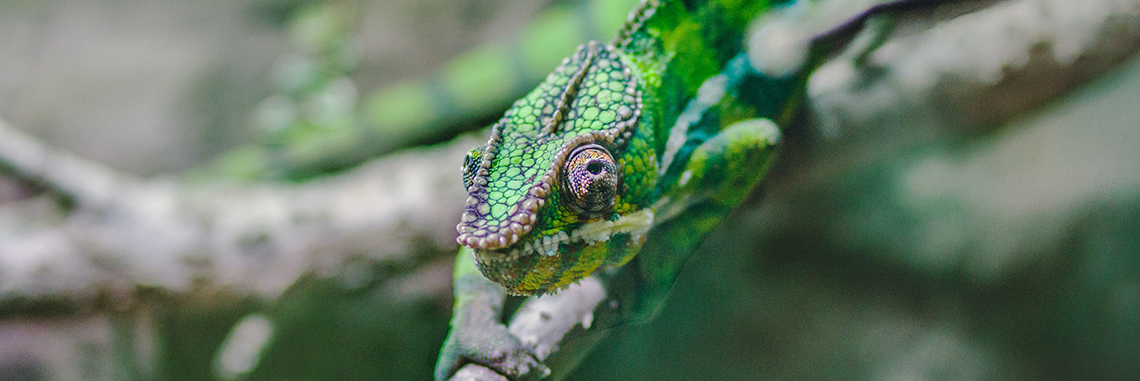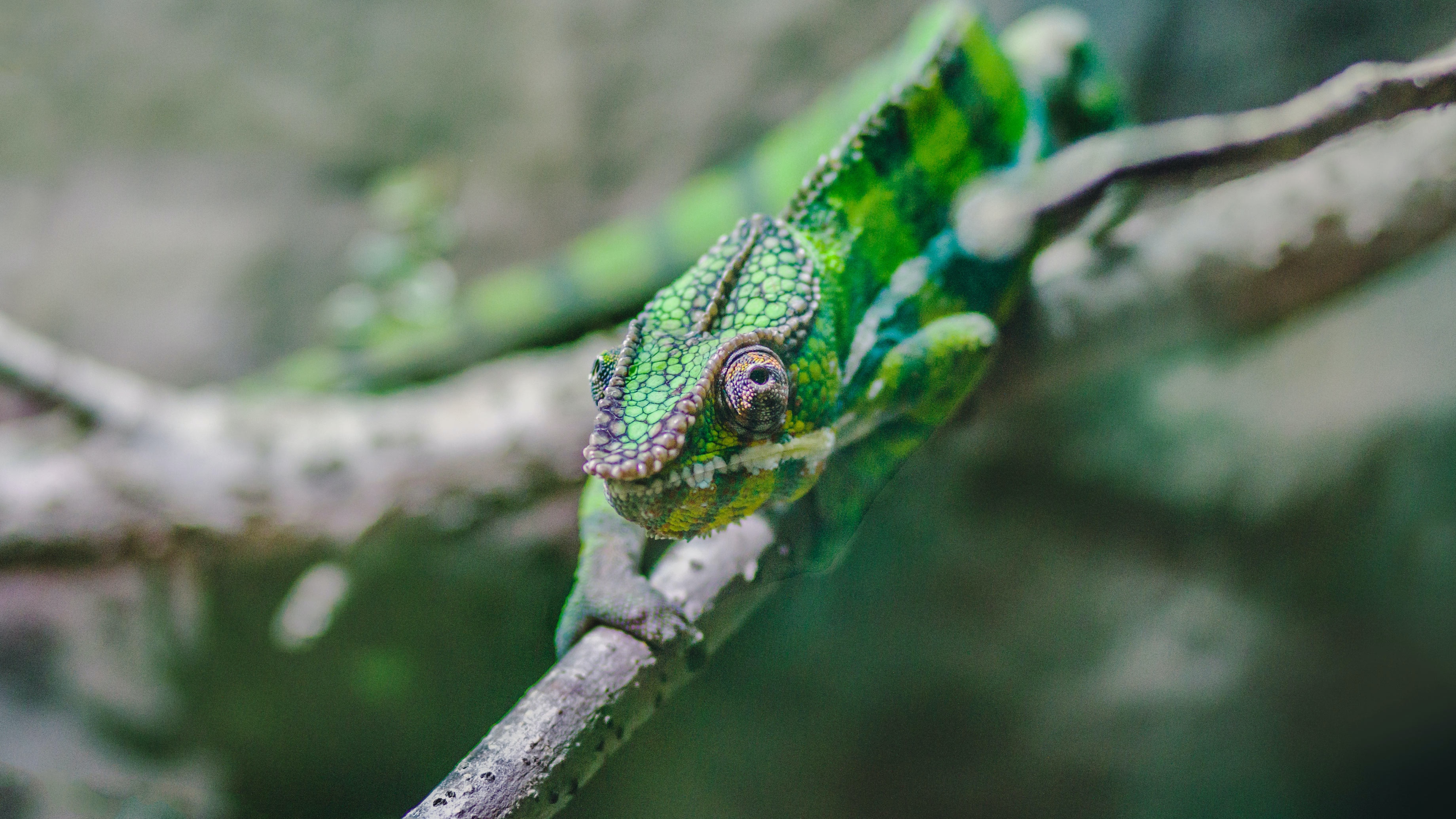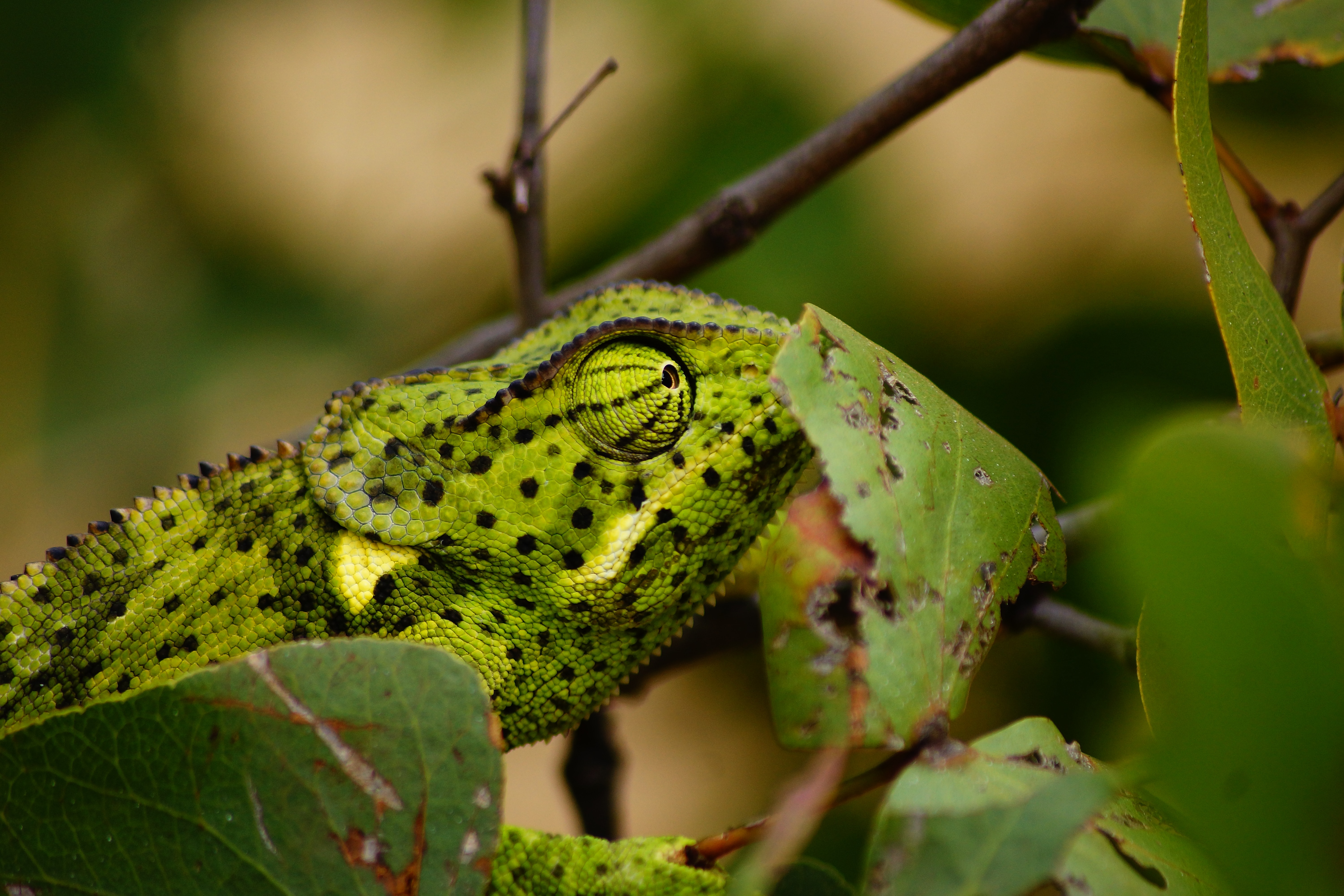The Chameleon, a Marvel of Evolution

by Jose Luis Gallego, environmental communicator (@ecogallego)
If there is one unmistakable reptile, not only on the Iberian Peninsula, but in all of Europe, it is the star of this post: the common chameleon.
Describing the chameleon to differentiate it from other reptiles is unnecessary, because this fascinating animal is peerless any way you look at it. This is assuming we actually see it, even when it’s directly in front of us. After all, one of the species’ most famous biological characteristics is its astonishing ability to blend into its surroundings.

A common chameleon on a branch
The pigments in the skin of a chameleon can reproduce the colours that our eyes transmit to the brain with incredible accuracy. Much like a computer sending a print command to a printer, the chameleon can “imprint” the colours of its surroundings onto its skin. Scientists call this “mimicry”, a skill the chameleon shares with other animals such as the octopus and sole, but in the reptile, it reaches an unparalleled degree of perfection.
The chameleon's body, tall and narrow like that of a fish, allows the reptile to maintain a low profile vis-a-vis its predators. Endowed with an incredibly flexible skeleton, the chameleon can move around treetops with the agility of an acrobat. It has unusually long legs for a reptile, designed to meet the needs of a skilled climber for whom keeping a good grip as it moves along branches or trunks is of utmost importance.
For the same reason, the reptile developed sturdy prehensile toes, perfectly arranged into three forward-facing and two backward-facing groups, giving the chameleon a firm grasp on branches. Completing the physical attributes that make this reptile such a marvel at environmental adaptation is a long and practical tail. A chameleon at rest usually keeps its tail tightly coiled, only unspooling this useful appendix to provide additional grip when on the move.
The chameleon has a flat head – Jurassic in design and wrinkled in appearance – that reveals its long history on our planet. Here we find one of the most evolved visual mechanisms in the animal kingdom: the famous chameleon eyes. This evolutionary marvel allows the reptile to survey its entire perimeter independently and in all directions.

Common chameleon blending into its surroundings
In a “cross-eye” exercise that is unprecedented among reptiles, the chameleon can look in two different directions simultaneously, keeping one eye trained on something behind it while the other eye looks ahead. The eyes move up and down, forward and back, rotating within the protective lid that covers almost the entire socket, thereby concealing the chameleon's eye from its prey. As mentioned earlier, the reptile can mimic the colour of its surroundings and this ability extends to the eyelid.
The chameleon is strictly a tree and bush dweller, only coming down to ground level to lay its eggs (between 5 and 35) in an underground cave excavated by the females in autumn. After the mating season, adult chameleons enter a false hibernation of sorts, reposing in their burrow until the following spring. At that point they emerge to continue their solitary lifestyle, marking territory and defending their domain against any fellow chameleon that might invade their space.

Common chameleon on a leaf
The chameleon's diet is predominantly insect based. As a hunter, the reptile likes to lie in wait and ambush its prey. After spotting a good candidate, the reptile holds perfectly still, calculates the distance, and surprises its prey by launching a fleshy projectile from afar: the chameleon has an incredibly long tongue, reaching up to 30 centimetres, which it wields with astonishing precision.
Unfortunately, the Iberian population of common chameleons is dwindling at an alarming rate due to illegal collectors – a practice that has been on-going for years – and the destruction and fragmentation of their exclusive habitats. These spaces have been almost completely taken over by humans: coastal woods and scrublands, and the dunes that surround the beaches of southern Spain, areas which have suffered tremendously under the pressure of real estate speculation and mass tourism.
At this time, only a few scattered woodlands in the provinces of Cadiz, Huelva, and Malaga comprise the shrinking map where this magnificent reptile can still be found in Spain. A small area south of the Portuguese Algarve completes the population on the Iberian Peninsula. In the rest of Europe, the last surviving chameleons of the continent live in very specific places along the southern coast of Sicily, and in Crete and the Peloponnese region.
If you are ever lucky enough to see a chameleon in the wild, maintain a safe distance to avoid causing the animal distress, and under no circumstances should you ever try to capture it. The common chameleon is a highly endangered species and strictly protected under Spanish and European law.
